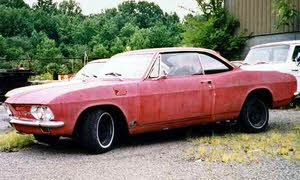 We had apparently become accustomed to being a two car family at this point so, when the blue Nova became a non-runner, I went shopping for another beater. I bought a 1965 Corvair in Kentucky. It didn’t look as ragged as the one at right (which might actually be a ’66) but it probably was. It was a full-on stripper with 3 on-the-floor, bare rubber floor mats, and no perceivable options other than an AM radio and even that might have been standard.
We had apparently become accustomed to being a two car family at this point so, when the blue Nova became a non-runner, I went shopping for another beater. I bought a 1965 Corvair in Kentucky. It didn’t look as ragged as the one at right (which might actually be a ’66) but it probably was. It was a full-on stripper with 3 on-the-floor, bare rubber floor mats, and no perceivable options other than an AM radio and even that might have been standard.
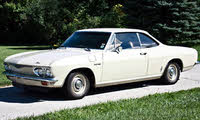
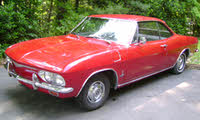 It had begun life as a poor white Chevy and that was still the color of the top. The bottom had been painted fire engine red. It was a decent repaint and still pretty shiny. It was sort of a blend of these two cars minus the fancy wheel covers and all that chrome. It really didn’t look too bad from the proper distance. Up close, something of a reverse freckled look became noticeable. A few chips had appeared in the red part so that bits of the white part showed through. It was a mild case of reverse measles that gave the car “personality”. Yeah. That’s what it was. Personality.
It had begun life as a poor white Chevy and that was still the color of the top. The bottom had been painted fire engine red. It was a decent repaint and still pretty shiny. It was sort of a blend of these two cars minus the fancy wheel covers and all that chrome. It really didn’t look too bad from the proper distance. Up close, something of a reverse freckled look became noticeable. A few chips had appeared in the red part so that bits of the white part showed through. It was a mild case of reverse measles that gave the car “personality”. Yeah. That’s what it was. Personality.
The fun began before I even had it registered. In order to transfer the title of an out of state car, it has to be physically inspected. The inspection has nothing to do with the condition of the car. Someone with the proper authority has to verify that the title matches the car. At that time, and maybe still, most car dealers had one or more properly authorized people on staff. The seller allowed me to take the car with his plate on it (I may have eventually mailed or taken it back) and I drove the car to a dealer. A properly authorized person looked it over and denied the transfer. The car’s VIN, which was inside the engine compartment, did not match the VIN on the paper Kentucky title. It was easy to see why but knowing didn’t help.
The proper VIN had a ’13’ in it. At some point in the past, probably because of grease and crud on the number, it had been written down as a ‘B’. It was definitely a “we’ll laugh about this later” situation. We both knew that the car and the paper belonged together and that the paper was wrong but the inspector was not authorized to fix it. All he could do was say yea or nay and he wasn’t about to say yea.
I tried another dealer without success and came within one county of returning the car. The error, I eventually learned, had occurred two transfers back. As long as the car stayed in Kentucky, no physical inspection was required and the error was simply propagated forward. I bought the car from a guy in Campbell County who had bought it from a guy in Kenton County. Or maybe it was the other way around. In any case both counties were close and once I got the right one, it was fairly easy to get a corrected title issued.
We were once again a two car family but not for long. The two cars, the ’69 Opel and ’65 Corvair, held up just fine. It was the family that fell apart. When my wife and I divorced, we sold the house and split the trivial amount of money that resulted. About the only things I wanted from the house were my clothes and some LPs (“No way you’re getting that copy of Hard Day’s Night I bought in high school!”). There wasn’t much property to divide and the division went pretty smoothly. She got the Opel and I got the Corvair. I also got the canoe. Because these three things are titled in Ohio, they had to be listed in the divorce decree and titles transferred. The first line of the decree was something like “Dennis L Gibson will have as his sole possessions the canoe and the Corvair.” I believe the intent was to establish that I was the sole owner of these two opulent vehicles but it read as if they were the only things I owned which was, Beatles albums aside, pretty much the truth.
The end of my time with the Corvair was at least somewhat interesting. It naturally continued its decline but served me reasonably well for many more months. When the starter went out I decided it was time to move on. But not immediately. My credit rating at that point was the opposite of good and it took a couple weeks to arrange a purchase. During those weeks, the Corvair did its job. I was living in a trailer park with enough of a slope to the driveway to get it started in the morning. The far side of the parking lot where I worked had an even better slope for getting it going at the end of the day. When I needed to stop somewhere else, such as at the grocery, I just left it running. No one was going to risk an auto theft charge for that measly car.
Previous Wheels: Chapter 16 — 1962 Chevy II
Next Wheels: Chapter 18 — 1971 Vega

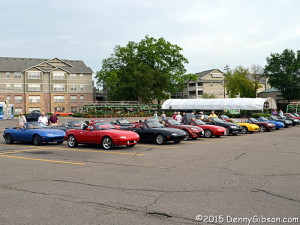

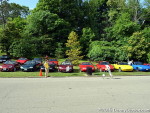
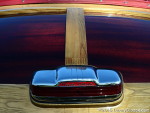
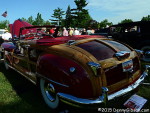
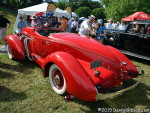


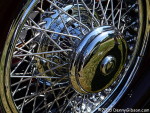

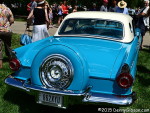
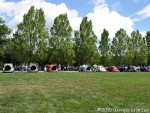
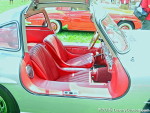
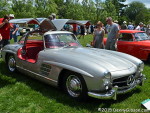
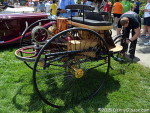
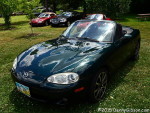
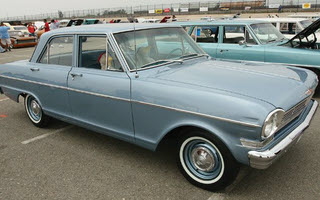 This car came and went while the Opel served as primary transport. I believe it was a 1962 model but it might have been a ’63. It was powered by a straight 6 mated to a two-speed Powerglide. It is the only car I’ve ever owned that I made money on.
This car came and went while the Opel served as primary transport. I believe it was a 1962 model but it might have been a ’63. It was powered by a straight 6 mated to a two-speed Powerglide. It is the only car I’ve ever owned that I made money on.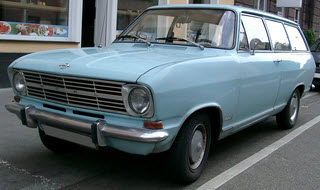 When it came time to replace the Dodge, we opted not for another American sedan but for a small import. However, since this was to be the family car, we made it a small import wagon, a 1969 Opel Kadett B Caravan. The family had, in fact, grown and there were now two young boys to fill the back seat. I don’t recall the purchase price but do remember that we bought the car from a couple professing to be witch and warlock and that the sickly Suzuki motorcycle was part of the deal.
When it came time to replace the Dodge, we opted not for another American sedan but for a small import. However, since this was to be the family car, we made it a small import wagon, a 1969 Opel Kadett B Caravan. The family had, in fact, grown and there were now two young boys to fill the back seat. I don’t recall the purchase price but do remember that we bought the car from a couple professing to be witch and warlock and that the sickly Suzuki motorcycle was part of the deal.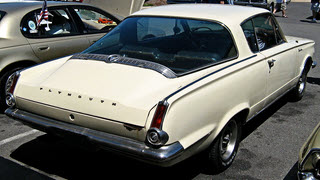 A white Plymouth Barracuda became mine after the
A white Plymouth Barracuda became mine after the 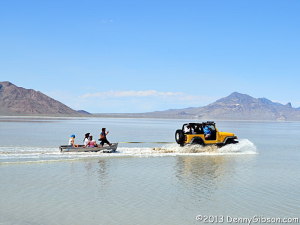
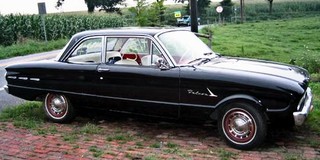 The 1961 in the title is something of a guess. I know for sure it was a first generation Falcon Futura. The first generation of Falcons ran from 1960 through 1963 with the bucket-seated Futura introduced in 1961. I believe mine was a ’61 but I guess it’s possible it was a year or two newer. If, however, you judged the car’s age purely on its condition, you would be challenged to believe it was a maximum of ten years old when I bought it in 1971 for $35.
The 1961 in the title is something of a guess. I know for sure it was a first generation Falcon Futura. The first generation of Falcons ran from 1960 through 1963 with the bucket-seated Futura introduced in 1961. I believe mine was a ’61 but I guess it’s possible it was a year or two newer. If, however, you judged the car’s age purely on its condition, you would be challenged to believe it was a maximum of ten years old when I bought it in 1971 for $35.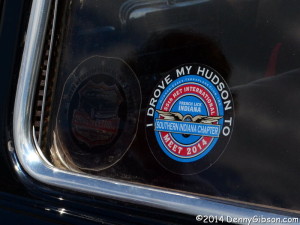


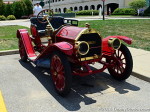

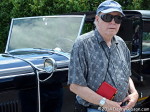
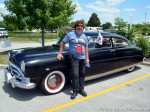


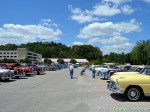
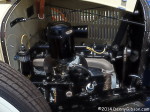

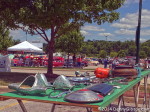
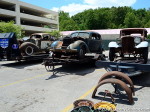
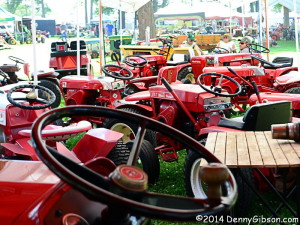
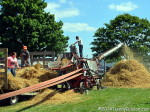
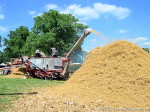
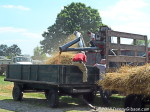
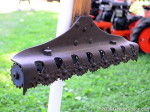
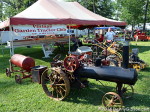
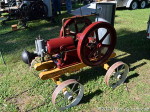
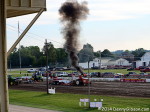
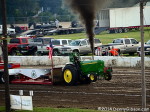
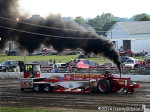
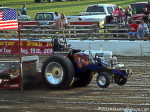
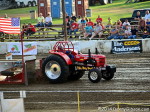
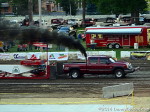
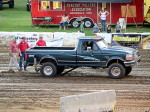
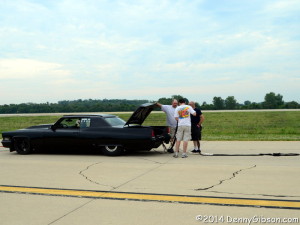
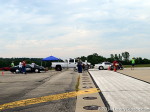
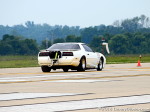
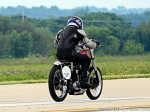
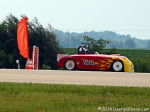
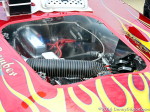



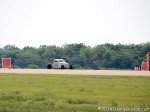
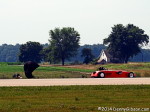
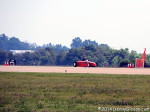
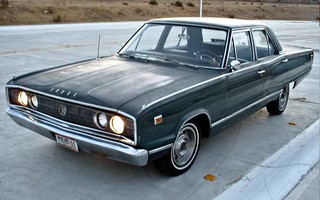 The crumpling of the Corvair was just one of several major events occurring within a few months time. Wreaking the Corvair led to purchasing another car and one of the other events led to purchasing a house. That event was my wife’s announcement that she was pregnant. We lived in a small one-bedroom apartment and immediately started looking for something larger. We looked at multi-bedroom apartments and a few rental houses. The owners of one house we looked at were considering renting as a last resort. They had already moved to a fancier place and were paying two mortgages. The financial strain coupled, I believe, with a little sympathy for the growing young family, resulted in them selling us the house on a land contract; a form of owner financing. So, in fairly short order, we became expectant parents, bought a three-bedroom house, and moved across town. Somewhere in there, we also bought a car.
The crumpling of the Corvair was just one of several major events occurring within a few months time. Wreaking the Corvair led to purchasing another car and one of the other events led to purchasing a house. That event was my wife’s announcement that she was pregnant. We lived in a small one-bedroom apartment and immediately started looking for something larger. We looked at multi-bedroom apartments and a few rental houses. The owners of one house we looked at were considering renting as a last resort. They had already moved to a fancier place and were paying two mortgages. The financial strain coupled, I believe, with a little sympathy for the growing young family, resulted in them selling us the house on a land contract; a form of owner financing. So, in fairly short order, we became expectant parents, bought a three-bedroom house, and moved across town. Somewhere in there, we also bought a car.